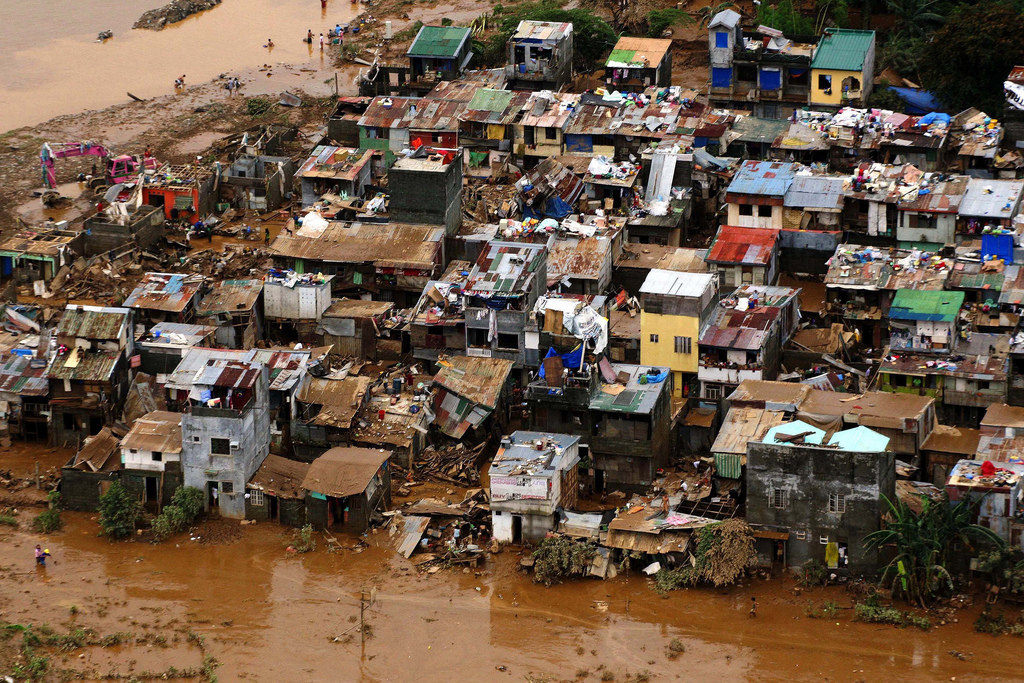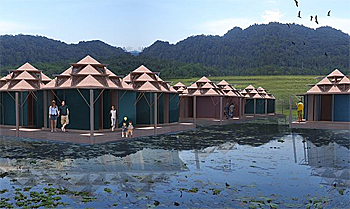I originally wrote this article for the Center for Sustainable and Development Studies Blog Series.
Around the world, extreme weather events intensify, driven by climate change.
Combined with a population growth that is becoming increasingly urban at an astonishing rate “we’re approaching a tipping point for
the safety of cities all over the world” World Bank, 2016). Countries continuously seek to improve their resilience at the local,
national, regional, and global levels to all kinds of disasters. Few, however, acknowledge that without resilience we would not achieve
sustainability, more so that resilience is that what drives sustainability.

Source: Photo: Ernie Penaredondo
According to the World Bank, climate-related disasters may push up to 77 million urban residents into poverty if not significant investment
to improve the resilience of cities around the world is done (2016). This is quite concerning especially as 80% of the world’s population are
predicted to live in urban areas by 2030, following dreams of better jobs, education, and health care. This risk is particularly exacerbated
in cities as natural defenses to the negative effects of disasters are removed. This causes more people to live in flood-prone areas and earthquake
zones which increases the likelihood of natural events becoming major catastrophes. In these examples, appropriate hazard mitigation and prevention
programs together with well-informed policies play a vital role to reduce the impact of catastrophes.
Where social relations are most dense and complex, it is important for cities to understand urban vulnerability and how to manage hazards.
However, because of the tendency of disaster studies to focus on rural areas and the tendency toward the exclusion of nature within urban development
studies, discussion on this focal point has been neglected hitherto. “This has led to weak theorization of the link between urbanization processes
and disaster, and consequently to the poor integration of risk reduction into urban development policy” (Pelling, 2015).
The underlying problem can also be attributed to budget allocation where the majority of international funding goes toward
reconstruction and emergency response, rather than to disaster risk reduction. According to the Global Risks Report 2019,
spending on disaster recovery is almost nine times higher than on prevention (WEF). Turning that around will not be easy,
particularly if it involves major disruptions such as relocation which takes many years of dialogue and planning.
Measures for resilience should, therefore, be put on top of the disaster management agenda. Cities, particularly of common profiles, can network and
collaborate on solutions. They can disseminate best practices that bring actions to scale in other similar cities, through the utilization of social
and political assets for the adaptive potential to arise. Burden-sharing between the public and private sectors, municipal and national authorities,
and between countries should also be explored to limit cross-border spillover, minimizing the risk especially for countries that may struggle to
find the resources to adapt. These collaborative and innovative approaches are clearly needed to ensure that action is taken globally before
it is too late. Furthermore, cities should become readily accountable to their citizens, local businesses, schools, and institutions for the
consequences of their actions.
This is of course not to say that cities have not already tried to become resilient. As a matter of fact, cities have a long history of adapting to environmental change, local sea-level rise for example. Many innovative cities are prioritizing preparedness following the global roadmap for reducing disaster loss or the UN’s Sendai framework for disaster risk reduction (2015-2030). C40 is one of the networks that connect many of the world’s megacities for effective collaboration, knowledge sharing and, meaningful, measurable, and sustainable action on climate change (C40, n.d.). These cities are known to take bold climate action, leading the way towards a healthier and more sustainable future. The Chicago Council on Global Affairs (2017) provides an example of how these cities are leading the way to bold climate action. Singapore for example is “a world leader for managing heavy rainfalls, collecting rainwater through a comprehensive network of drains and canals and then using it as drinking water. Cities like Tokyo and Chicago have built massive underground tunnels that store water during intense rainfall to prevent flooding. Santiago enforces strict building codes requiring all new buildings to be able to survive a 9.0 magnitude earthquake and conducts routing evacuation to ensure preparedness.
In Europe, cities in the Netherlands like Rotterdam and Amsterdam are home to numerous urban water innovations, such as floating houses and city squares designed to collect millions of liters of water in flood conditions. Finch Floating Homes, a Dutch company has extended this innovation to developing economies like the Philippines, my home country where a natural disaster has become a daily reality, to enable affordable and safe living in deltas and developing economies.

Impression of the floating homes that Finch Floating Homes wants to build in the Philippines
Source: Finch Floating Homes
To conclude, it cannot be denied that our capacity to deal with shocks and disasters has led to innovations. While hurricanes and earthquakes will still occur, cities can minimize the devastation it brings with resilient infrastructure, sustainable policies, and inclusive urban planning and innovation. As we become more aware of what is happening all over the world, making us feel more vulnerable than ever, it is of utmost importance that we understand our resilience capacity to cope with disruption and disturbance. Unity in planning, action, funding, and infrastructure should be the foundation of these efforts and these efforts should be insulated from politics.
References
- C40 (n.d.), About
- Finch Floating Homes (n.d.)
- (Pelling, M. (2005). The Vulnerability of Cities: Natural Disasters and Social *Resilience, Environmental Sciences, 2:4, 463-464 DOI: 10.1080/15693430500111884
- The Chicago Council on Global Affairs (2017). Natural Disasters
- World Bank (2016). World Bank: Investing in Urban Resilience Can Save the World’s Cities Billions Each Year and Keep Millions out of Poverty
- World Economic Forum (2019). The Global Risks Report 2019 14th Edition